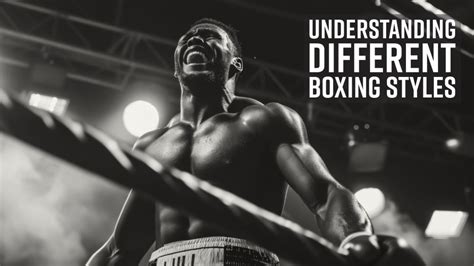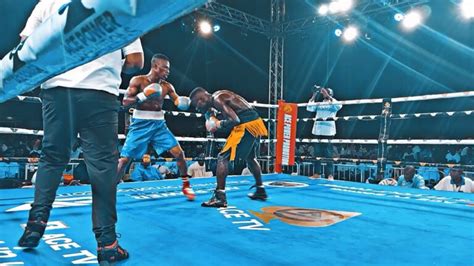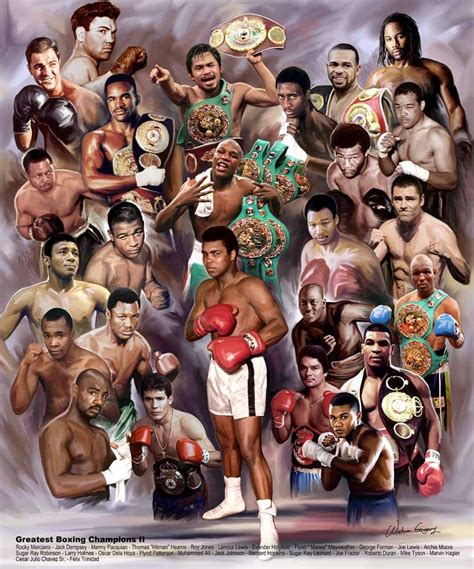Explore essential boxing styles, body type influences, and goal assessment to find your perfect boxing technique. Learn about offense vs. defense and practice strategies.Boxing is not just a sport; it’s an art form that encompasses various styles, each uniquely tailored to individual strengths and preferences. Whether you’re a beginner contemplating your first boxing class or an experienced fighter looking to refine your technique, understanding the different boxing styles is crucial in finding the one that resonates with you. From the agile footwork of a mover to the powerful strikes of a brawler, each style has its characteristics and advantages. In this guide, we’ll dive into the nuances of boxing styles, explore how body type and personal goals influence your choice, and provide tips for finding the right fit through practice and experimentation. Join us as we uncover the vibrant world of boxing and help you navigate your journey to becoming a confident and skilled fighter!
Understanding The Basic Boxing Styles And Their Characteristics
Boxing is a sport that encompasses various styles, each with its own unique characteristics and strategies. These styles are influenced by factors like body type, skill level, and personal preferences. Here are some of the most common boxing styles:
- Out-Boxer: This style focuses on speed, agility, and range. Out-boxers typically rely on footwork and distance to keep opponents at bay, using quick jabs and punches to score points. Famous out-boxers include Muhammad Ali and Floyd Mayweather Jr.
- Slugger (Brawler): Sluggers thrive on power and aggression. They aim to overwhelm their opponents with strong punches and relentless forward movement. This style often sacrifices speed for strength. Notable sluggers include Mike Tyson and George Foreman.
- Counterpuncher: Counterpunchers are strategic fighters who wait for their opponents to make a move and then exploit openings. This style requires excellent timing and reflexes. Famous counterpunchers include Juan Manuel Márquez and Canelo Álvarez.
- Boxer-Puncher: This style is a hybrid, combining elements of both out-boxing and slugging. Boxer-punchers are versatile fighters who can adapt to changing circumstances in the ring, making them effective in various situations. Popular boxer-punchers include Oscar De La Hoya and Sugar Ray Leonard.
Choosing the right style is crucial for success in the sport. Consider your physical attributes, skills, and ring preferences when determining which style aligns best with your strengths. Embracing the nuances of each style will enhance your boxing journey.
How Your Body Type Influences Your Boxing Style Choice
When it comes to boxing, your body type plays a significant role in determining which style may suit you best. Different physical attributes can enhance certain techniques and strategies, making it essential to understand how your physique can impact your performance in the ring.
Generally, body types can be categorized into three main categories: ectomorph, mesomorph, and endomorph. Each type has its strengths and weaknesses in boxing:
- Ectomorphs are typically lean and tall, which enables them to utilize their reach and speed effectively. These fighters often excel in styles that emphasize agility, such as out-boxing or counter-punching.
- Mesomorphs have a muscular build and are generally well-suited for a variety of boxing styles. Their natural strength allows them to engage in both offensive and defensive strategies, making them versatile in the ring.
- Endomorphs tend to have a stockier build with a higher body fat percentage. These fighters may choose to adopt a pressure-fighting approach, using their strength to wear down opponents through relentless attacks.
Understanding your body type can guide you in tailoring your training regimen to maximize your strengths. For example, if you are an ectomorph, focusing on endurance training and speed drills can give you an edge in your matches. Conversely, mesomorphs could benefit from a balanced training program that hones both their agility and power.
The key is to experiment and assess how different styles feel when applied to your unique physique. Embrace your natural attributes and develop them into your boxing style, ensuring that your performance is optimized in alignment with your body’s capabilities. By understanding the influence of your body type, you can choose a boxing style that not only resonates with your physical makeup but also enhances your overall effectiveness in the ring.
Assessing Your Goals To Determine The Best Boxing Style
When it comes to boxing, understanding your personal goals is crucial in helping you choose the right style that aligns with your aspirations. Are you looking to improve your fitness, learn self-defense, or compete at higher levels? Each of these objectives can lead you to a different style of boxing.
If your primary focus is on fitness and conditioning, you might lean toward a style that emphasizes agility and endurance. Styles like understanding the fundamental techniques of shadowboxing, for instance, can be invaluable. This approach helps you develop your footwork and punch combinations while keeping your heart rate elevated. Alternatively, if you’re keen on self-defense, a more defensive style such as that used in traditional boxing can equip you with the necessary skills to protect yourself effectively.
For those aspiring to compete, understanding the sport’s specific requirements is vital. Competitive boxing often favors a range of styles that rely on strength, speed, and strategy. Analyzing major boxers and their techniques can inspire you to adopt a style that complements your physical attributes, whether that leans more towards an aggressive brawler or a tactical counterpuncher. Understanding your goals not only directs you to a suitable boxing style but also significantly enhances your training experience.
Take the time to assess your ambitions and how you envision your boxing journey. This reflection will guide you in making a more informed decision about which boxing style suits you best.
Understanding The Differences Between Offense And Defense Styles
When it comes to boxing, having a clear understanding of offense and defense styles is crucial for any aspiring fighter. Each style serves a unique purpose and can significantly impact your performance in the ring.
Offensive boxing focuses on aggression and scoring points by landing punches on the opponent. This style is characterized by a forward-moving strategy, where fighters create openings and capitalize on their opponent’s weaknesses. Common techniques include combination punches, feints, and pressure fighting. Boxers who succeed in offensive tactics often possess traits such as speed, power, and relentless energy.
On the other hand, defensive boxing emphasizes evading and countering attacks, promoting survival and strategy over outright offense. Defensive boxers use techniques like slipping, bobbing, and weaving to avoid punches, creating opportunities to counterattack. This style prioritizes timing, distance, and reading an opponent. Advocates of defensive boxing are typically characterized by their patience and analytical approach.
Understanding the distinctions between these two styles can help you determine which one aligns with your natural inclinations and strengths. While some boxers may specialize in one style, many successful fighters blend elements of both offense and defense, adapting their strategy based on the opponent and fight circumstances.
Your choice between offensive and defensive boxing should reflect your personal strengths, style, and objectives in the sport. Testing both styles will not only refine your skills but also give you a better understanding of what suits you best in your boxing journey.
Finding The Right Boxing Style Through Practice And Experimentation
Choosing the right boxing style is not a one-size-fits-all approach. It requires a journey of understanding the nuances of various styles and how they align with your personal strengths and weaknesses. One of the most effective ways to determine which boxing style suits you best is through practice and experimentation.
Here are some steps you can take to find your ideal boxing style:
- Try Different Styles: Attend classes or spar with fighters who excel in different styles, whether it’s a traditional stance or a more modern approach. This firsthand experience can help you identify which techniques feel natural to you.
- Record Your Sessions: Keep a journal of your training sessions and sparring matches. Write down what aspects of different styles you enjoyed or struggled with, helping you pinpoint what resonates with you.
- Seek Feedback: Get insights from coaches and peers on your performance. They can often spot your natural tendencies and suggest styles that might suit you. Sometimes, an outside perspective helps you see your potential more clearly.
- Assess Your Comfort Level: Pay attention to how comfortable you feel in various techniques. If a specific style makes you feel confident and agile, it’s likely a good fit for you.
- Be Patient: Remember that discovering your style is a process. Give yourself time to experiment with different techniques and adapt your training routine based on your findings.
The best boxing style for you will emerge as a combination of your physical attributes, goals, and personal preferences. By actively participating in training and being open to trying new approaches, you’ll be well on your way to understanding the boxing styles that suit you best.
Frequently Asked Questions
What are the main boxing styles discussed in the article?
The article discusses various boxing styles including Orthodox, Southpaw, Counterpuncher, Swarmer, and Out-Boxer.
How can I determine which boxing style suits me best?
To determine your best boxing style, consider your physical attributes, skill level, and personal preferences as well as experimenting with different styles during training.
What is the Orthodox boxing style?
Orthodox is a common boxing stance used by right-handed fighters, characterized by a left foot forward and a reliance on jabs and straight punches.
What distinguishes a Southpaw from an Orthodox fighter?
A Southpaw fighter is left-handed, using a stance that is the opposite of Orthodox, with their right foot forward, which can create unique challenges for opponents trained against right-handed fighters.
What does it mean to be a Counterpuncher in boxing?
A Counterpuncher is a fighter who focuses on defense and waits for the opponent to make a move before responding with precise counterattacks.
Can you explain the Swarm style in boxing?
The Swarmer style, also known as an inside fighter, involves aggressive close-range tactics, overwhelming opponents with a series of quick punches.
What advantages does an Out-Boxer have?
An Out-Boxer typically uses footwork and distance to control the pace of the fight, relying on long-range punches to keep opponents at bay.









